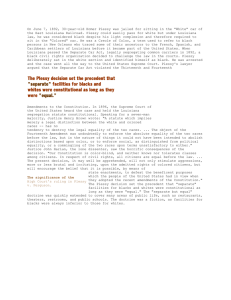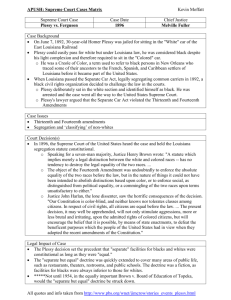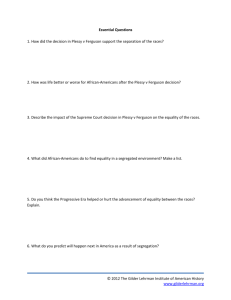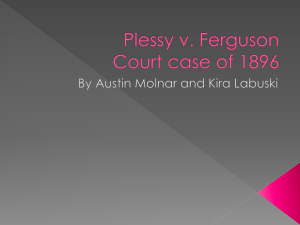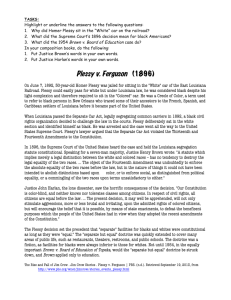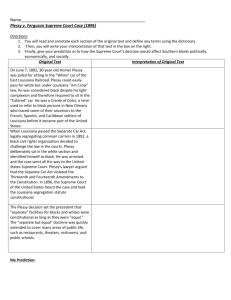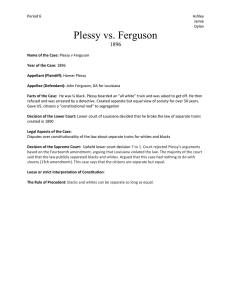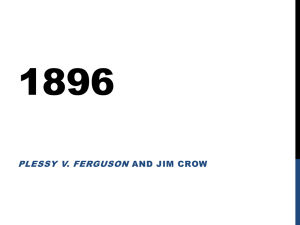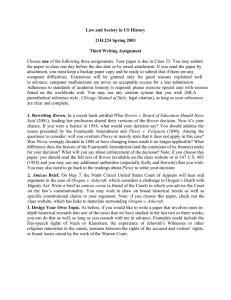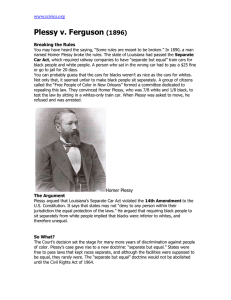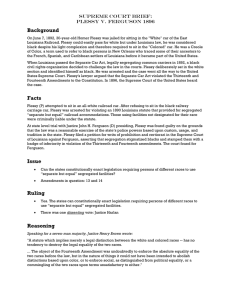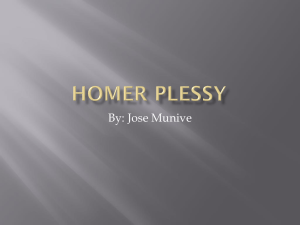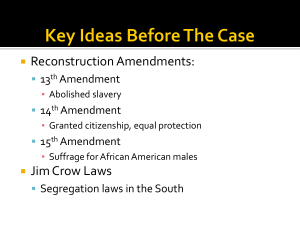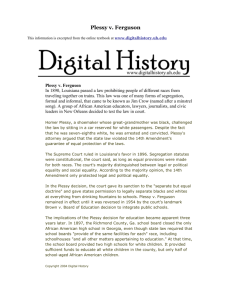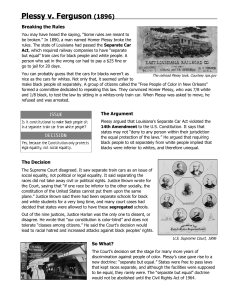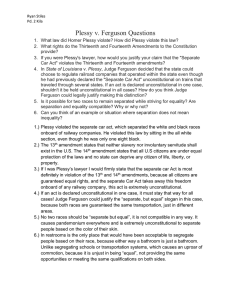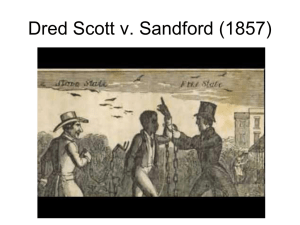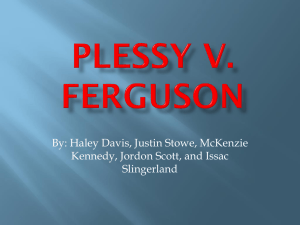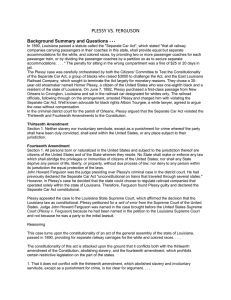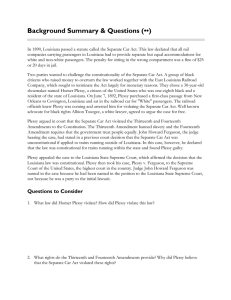Plessy VS. Ferguson (1896)
advertisement
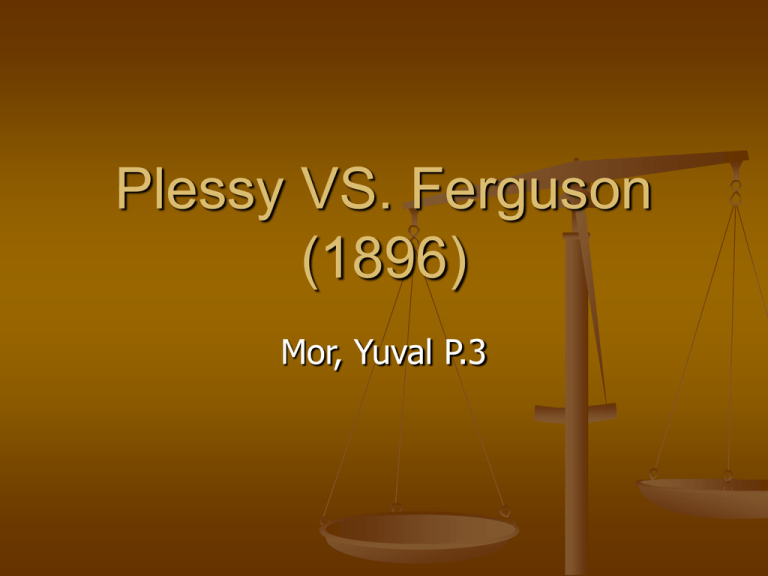
Plessy VS. Ferguson (1896) Mor, Yuval P.3 Facts of the Case When Louisiana passed the Separate Car Act, legally segregating common carriers in 1892, a black civil rights organization decided to challenge the law in the courts. On June 7, 1892, 30-year-old Homer Plessy was jailed for sitting in the "White" car of the East Louisiana Railroad. Plessy deliberately sat in the white section and identified himself as black. He was arrested and the case went all the way to the United States Supreme Court. The Trial Plessy's lawyer argued that the Separate Car Act violated the Thirteenth and Fourteenth Amendments to the Constitution. In 1896, the Supreme Court of the United States heard the case and held the Louisiana segregation statute constitutional Direct Quotes from Trial Speaking for a seven-man majority, Justice Henry Brown wrote: "A statute which implies merely a legal distinction between the white and colored races -- has notendency to destroy the legal equality of the two races. ... The object of the Fourteenth Amendment was undoubtedly to enforce the absolute equality of the two races before the law, but in the nature of things it could not have been intended to abolish distinctions based upon color, or to enforce social, as distinguished from political equality, or a commingling of the two races upon terms unsatisfactory to either. Direct Quotes from Trial Justice John Harlan, the lone dissenter, saw the horrific consequences of the decision. "Our Constitution is colorblind, and neither knows nor tolerates classes among citizens. In respect of civil rights, all citizens are equal before the law. ... The present decision, it may well be apprehended, will not only stimulate aggressions, more or less brutal and irritating, upon the admitted rights of colored citizens, but will encourage the belief that it is possible, by means of state enactments, to defeat the beneficent purposes which the people of the United States had in view when they adopted the recent amendments of the Constitution." Conclusion Thee Plessy decision set the precedent that "separate" facilities for blacks and whites were constitutional as long as they were "equal.“ The "separate but equal" doctrine was quickly extended to cover many areas of public life, such as restaurants, theaters, restrooms, and public schools. The doctrine was a fiction, as facilities for blacks were always inferior to those for whites. Not until 1954, in the equally important Brown v. Board of Education of Topeka, would the "separate but equal" doctrine be struck down.
